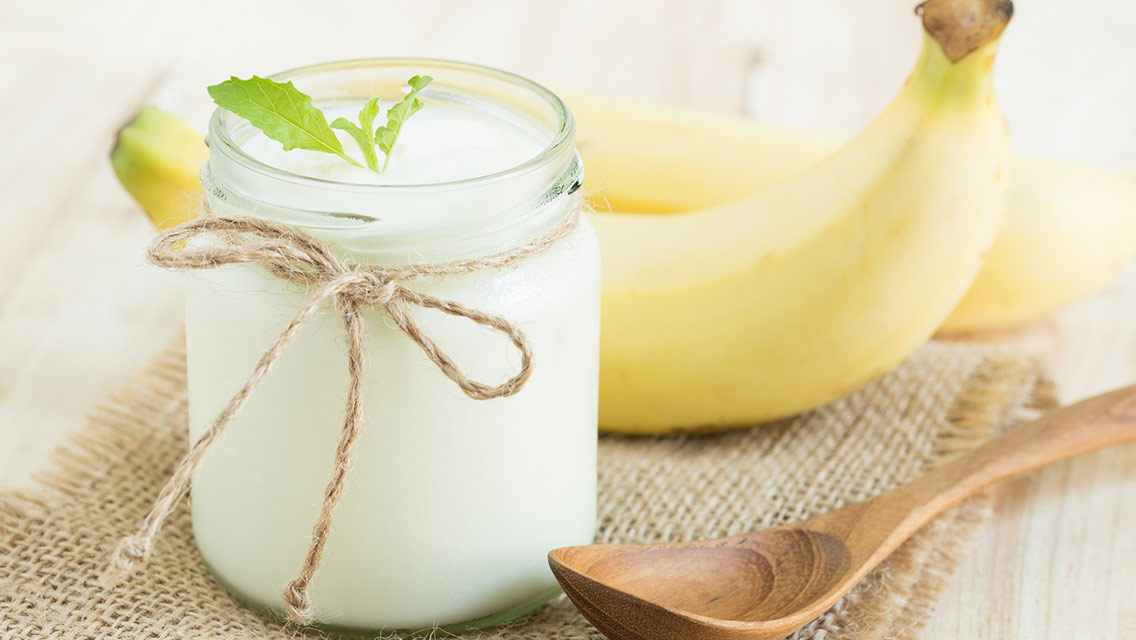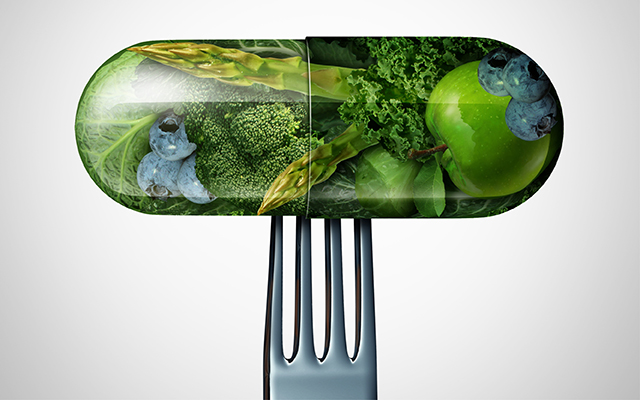If you track nutrition news the way some folks follow fashion or sports, you’re already familiar with probiotics, which are quickly becoming one of the biggest food trends of the decade.
Our guts are filled with billions of good bacteria that help regulate our immune systems. When that bacteria is altered or destroyed by antibiotics, drugs and poor lifestyle, they can be degraded enough to cause disease and ill health. Probiotics can repopulate the gut’s healthy bacteria by adding billions of different strains of flora, thereby improving vitality and helping stave off chronic disease.
In 2011 consumers dropped $140 million on probiotic-laced foods (such as yogurt and kombucha) and dietary supplements. Sales in the United States are predicted to spike by nearly 50 percent by 2016. The surge is fueled, in part, by growing evidence that probiotics have the potential to help with ailments ranging from diabetes to obesity to irritable bowel syndrome (IBS). (For more on how probiotics optimize our health, see “Good Bacteria Welcome.”)
Simply put, says W. Allan Walker, MD, director of the division of nutrition at Harvard Medical School, “probiotics is one of the hottest areas of research in the world today.”
The problem is that the market is so flooded with options (naturally occurring probiotics in fermented foods; regular foods that are enhanced with bacterial cultures; powders, pills, tablets and capsules) that consumers can get overwhelmed and make bad choices.
That is why it’s important to be as informed on the subject as possible.
“Your gut is the center of your universe [and your immunity],” says Atlanta-based nutritionist and naturopath Deirdre Rawlings, PhD, ND, author of the upcoming book Fermented Foods for Health: Use the Power of Probiotic Foods to Improve Your Digestion, Strengthen Your Immunity and Prevent Illness. “You have the power to enhance or destroy it.”
Eager to balance your gut and improve your immunity but overwhelmed by the options? Here’s a simple primer on how to buy, store and consume probiotics.
1. Seek out fermented foods.
Fermentation concentrates plants’ nutrients, especially B and C vitamins, and inoculates the gut with a host of beneficial bugs. The list of food options is long: yogurt, miso, tamari, sourdough bread and kombucha, for example, are all fermented foods that naturally contain probiotics. (For more options, see a list of “Probiotic and Prebiotic Foods” below.) “Sauerkraut is one of the cheapest probiotics you can buy,” adds Rawlings. Whenever possible, buy natural sauerkraut fermented in saltwater because foods preserved in vinegar (an astringent) can disturb the gut’s natural acid levels. (Try these recipes for some of your favorite fermented foods.)
2. Be selective when choosing probiotic-enriched foods.
Only fermented foods naturally contain probiotics, but food manufacturers have jumped on the bandwagon, sprinkling the beneficial bugs into a wide range of foods, like cereals, snack bars and bread. When probiotic cultures are separated from their original source and added to processed foods, however, their benefits may not transfer. Extreme temperatures are enough to kill many healthy bugs, so the advantages of probiotics added to baked goods and ice cream are questionable, says Walker. “In many cases, the public is being hoodwinked by food makers who are eager to capitalize on people’s desire to eat healthily.”
3. Buy and store probiotic-rich foods in glass jars or ceramic containers.
Avoid metal tins because they often contain aluminum, which can interact with the lactic acid in fermented foods and potentially create toxins, says Rawlings. And scratched or soft plastics may leach chemicals into your food.
4. Chill for longevity.
When refrigerated after opening, some fermented foods will keep for several weeks. Beneficial bacteria will multiply as long as the container is not contaminated (so never eat directly from the jar or double-dip). Live supplements will survive for months in the refrigerator; freeze-dried, even longer. Warning: If left unrefrigerated, certain probiotic-rich foods and drinks (like kombucha) can spoil, build up pressure and even explode their packaging.
5. Analyze your food and supplement choices.
If you are targeting a specific health challenge, such as digestive problems, you might opt for the probiotic supplements route. If so, be aware that the benefits of probiotics vary from strain to strain. For example, the strain that combats irritable bowel syndrome is different from the strain that prevents urinary tract infections. It’s a good idea to consult the supplement manufacturer about any supporting research, says Mary Ellen Sanders, PhD, an industry consultant who serves as executive director of the International Scientific Association for Probiotics and Prebiotics. (See “Proven Benefits of Probiotics,” below, for more information about various probiotic strains and their benefits.) But if your main goal is simply to improve your overall health, you might be better off buying high-quality, probiotic-rich foods rather than a supplement, because you’ll get lots of macro- and micronutrients as well as beneficial bacteria. You’ll probably also save yourself some money in the process.
6. Buy the best supplements you can afford.
When considering your supplement options, keep in mind that probiotics are sensitive to temperature, moisture and oxygen — and the journey from factory floor to large intestine is a long one. Survival, and therefore efficacy, depends on how strains are cultivated, preserved, stored and handled. This is not the time to pinch pennies. “You can’t buy a six-dollar bottle at a big-box store and expect results,” says Rawlings. “When it comes to probiotics, you pretty much get what you pay for.” Check company websites for links to published research, consult integrative health professionals about their favorite brands, and buy from companies you trust.
7. Consider quantity.
The number of live microorganisms in a probiotic is measured in CFUs (colony forming units). Any supplement label should list how many live microorganisms are in each serving. Recommended doses range from 1 billion CFUs (to maintain a healthy gut, for instance) to 10 billion CFUs (for addressing specific conditions). Ideally, swallow probiotics on a full stomach when stomach acid levels are low to give probiotics their best chance at survival. Some experts counsel building up your levels of probiotics gradually to avoid any gas or bloating. (You still want to be careful about which probiotic supplements you choose. See “Is It Possible to Take Too Many Probiotics?” for more.)
8. Increase your fiber intake.
In order for probiotics to do their job and flourish, they need a steady supply of fuel. That fuel comes in the form of a type of soluble fiber known as a prebiotic. The two most widely tested prebiotics have tongue-twister names: fructooligosaccharides (FOS for short) and galactooligosaccharides (or GOS). Ideally, you’ll take a combination of both prebiotics and probiotics (see “Probiotic and Prebiotic Foods,” below, for food-based suggestions). Together the duo contributes to a balanced gut ecosystem that can improve nutrient absorption and help move matter through the digestive system. The happier your ecosystem, the faster your metabolism, and the lower the odds of weight gain as you age, says Rawlings.
(Just how important is fiber? See “Why You Need to Eat Fiber” to learn more.)
9. Minimize your exposure to environmental toxins, medications and alcohol.
All three can damage the gut’s lining and can make it difficult for good bacteria to thrive.
10. Eat less junk.
Processed foods contain ingredients that irritate the gut and feed bad bacteria, making it harder for the good stuff to thrive. An occasional Happy Meal won’t do long-term damage, but ingesting processed foods like chips, cookies and soft drinks every day can inflame the gut’s lining and create small fissures between cell walls. The result? Particles of undigested food slither through the cracks and are then targeted by a full-scale immune response, which makes things even more inflamed. Like vermin, bad bacteria multiply. Eventually the bad bacteria rule the roost, weakening stomach acid, which slows nutrient absorption, and concentrating bile, which prevents the necessary excretion of toxins and hormones (like estrogen). This, in turn, increases your risk of nutrient deficiencies and hormone-related cancers.
Proven Benefits of Probiotics
Two of the most common classes of good bacteria are Lactobacillus (with more than 80 recognized species) and Bifidobacterium. Here’s a rundown on what those and other probiotics are proven to do:
- Prevent or treat diarrhea (Saccharomyces boulardii, Lactobacillus GG, Lactobacillus reuteri SD2112)
- Shorten the length of antibiotic-associated diarrhea (Saccharomyces boulardii, LGG, Lactobacillus casei DN114 001)
- Prevent or treat eczema linked to cow’s milk allergy (LGG, Bifidobacterium lactis)
- Lower odds and shorten bouts of bacterial vaginosis (Lactobacillus acidophilus, Lactobacillus rhamnosus GR-1, and Lactobacillus reuteri RC14)
- Treat symptoms of irritable bowel syndrome (Bifidobacterium infantis 35624 and VSL#3)
- Relieve symptoms of lactose intolerance (L. acidophilus N1)
9 Common Signs of Gut Imbalance
If you are experiencing some of these symptoms, the number of bad bacteria in your gut might be crowding out the good bacteria.
- Bloating
- Constipation
- Diarrhea
- Fatigue
- Gas
- Bad breath
- Acne
- Autoimmune disease
- Yeast infections
Probiotic and Prebiotic Foods
Want to look and feel your very best? Start enjoying more foods naturally high in probiotics — and in the fiber-rich prebiotics that help those good bugs thrive.
Probiotic-Rich Foods
Dairy Sources
- Yogurt
- Kefir
- Buttermilk
- Crème fraîche
- Lassi, a drink made from yogurt and water
- Aged cheeses, such as bleu, Gouda and cheddar
Fruit and Vegetable Sources
- Brined pickles
- Tangy chutneys
- Brined olives
- Sauerkraut and its ethnic variations — kimchi (Korean), tsukemono (Japanese), choucroute (French)
- Sauerruben (fermented sour turnips)
- Pickled beets
Soybean Sources
- Miso
- Tempeh
- Natto
- Soy sauce
- Tamari
Grain Sources
- Traditional sourdough breads
Nondairy Beverages
- Kombucha
This article originally appeared as “Probiotics at Work.”




This Post Has 0 Comments